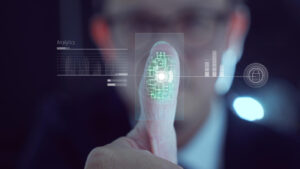The rapid proliferation of the Internet of Things (IoT) has revolutionized the way we interact with technology, transforming our homes, industries, and healthcare systems observed Bahaa Abdul Hadi. However, this interconnected world also brings with it a pressing concern: security.
As we entrust more of our daily lives to IoT devices, safeguarding our data and privacy becomes paramount. In response to this challenge, a new and promising frontier in IoT security emerges – biometric patterns. Biometrics, encompassing techniques such as facial recognition, fingerprint scanning, and voice authentication offer a promising alternative to traditional security methods.
Understanding IoT Security
Comprehending IoT security involves recognizing the vulnerabilities inherent in this ecosystem. IoT systems, from smart homes to industrial settings, face threats like data breaches, unauthorized access, and device tampering. Traditional defenses have relied on passwords, PINs, encryption, and two-factor authentication.
However, these methods have their shortcomings, such as susceptibility to hacking and user inconvenience. Transitioning to biometric patterns, which encompass fingerprint scanning, facial recognition, and voice authentication, offers an alternative approach. These biometrics provide uniqueness and robust protection against repudiation, enhancing the security posture of IoT devices and systems.
Biometrics in IoT
The integration of biometric patterns within the Internet of Things (IoT) marks a significant shift in security paradigms. Biometrics, which encompass fingerprint scanning, facial recognition, and voice authentication, offer several advantages.
They ensure uniqueness and non-repudiation, eliminating the vulnerabilities associated with traditional password-based systems. User convenience is enhanced as users no longer need to remember complex passwords. However, there are challenges to address, including concerns over privacy, scalability, and the issue of false positives and negatives.
Use Cases of Biometric Patterns in IoT Security
Biometric patterns find diverse applications within IoT security, demonstrating their versatility and effectiveness. In the realm of smart homes, facial recognition grants secure door access, while voice recognition enables seamless interactions with voice-activated devices. Industrial IoT benefits from fingerprint authentication for machinery access and retina scans to safeguard factory premises.
Healthcare IoT incorporates biometric patient authentication for medical devices and secure access to sensitive health records. Transportation and logistics leverage biometric authentication for vehicle access and bolster cargo security. These use cases exemplify how biometrics enhance security across various IoT domains, ensuring robust protection and user convenience.
Challenges and Concerns
Implementing biometric patterns in IoT security comes with a set of significant challenges and concerns. Security vulnerabilities persist as hackers continue to devise sophisticated methods for bypassing biometric systems. Ethical and privacy issues arise, particularly regarding the collection and storage of sensitive biometric data.
Cost and scalability concerns also loom large, as the deployment of biometrics across a broad spectrum of IoT devices can be financially taxing. Plus, navigating the ever-evolving landscape of regulations and compliance requirements demands meticulous attention.
Conclusion
The integration of biometric patterns in IoT security ushers in a promising era of enhanced protection for our interconnected world. As we’ve explored, these biometric modalities offer unique advantages, including non-repudiation, user convenience, and the elimination of password-related vulnerabilities.
However, we’ve also acknowledged the challenges such as privacy concerns, scalability, and the need for continuous monitoring. Despite these hurdles, biometrics stand as a powerful solution to fortify IoT security. As technology advances, hybrid authentication methods and standardized regulations will shape the future of this field. With the prudent implementation and ongoing research, biometric patterns are poised to play a pivotal role in safeguarding our IoT-driven lives.
The blog was written by Bahaa Abdul Hadi and has been published by the editorial board of Identity Herald. For more information, please visit www.identityherald.com




